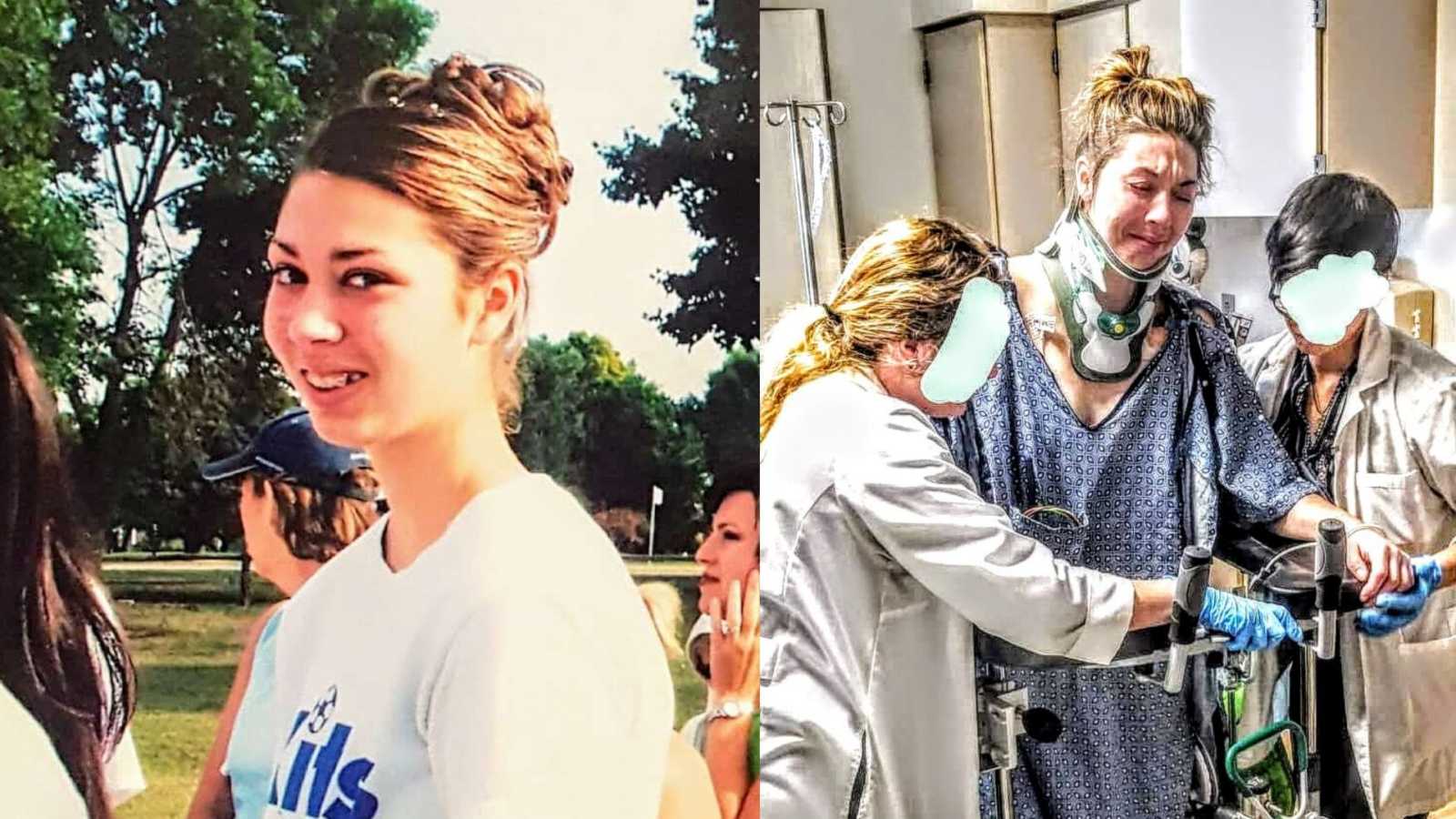“Close your eyes and try to picture what your life may look like if you could never move your head, your neck, or any part of your spine again. Hard to imagine, isn’t it?
Last year I was faced with making a decision that seemed impossible. For the past 6 months, I’ve been learning how to live a life unable to move any section of my spine and my pelvis. Being fused in this manner is so rare there is zero literature and data. I knew going into surgery, adapting would be difficult, but it has been significantly harder than I expected. Nothing could have prepared me for what I was about to embark on.
Now, you may be wondering how I ended up in this predicament. In order to understand, I must explain a condition I have and rewind to my 35th surgery on October 30, 2018.

I have a connective tissue disorder called Ehlers-Danlos Syndrome. EDS causes the body to produce faulty collagen. Collagen is like the glue that holds your body together. This can lead to joint dislocations, subluxations, easy bruising, pain, trouble healing, and a multitude of other issues and comorbidities. I’ve had a lot of issues with my body since 2005, but for the past several years, EDS has attacked my spine.
I’ve been stuck in the world of neurosurgery since April 5, 2016. By the time 2018 rolled in, I had undergone 5 spinal fusions and 2 halo braces to stabilize my spine. My pain management physician ended up referring me out to a specialist who deals with complex spinal deformities. On September 19, 2018, I had my initial consultation with the surgeon. I was scared and nervous he wouldn’t be able to help me. Why? Because people who have EDS don’t have the luxury to just go to any surgeon due to our faulty collagen. Seeing a surgeon who has only heard of EDS isn’t enough. Hearing of EDS and understanding EDS are two very different things. We need surgeons who understand.
On October 30, 2018, I had a spinal revision. When I was told my surgery was deemed the biggest surgery performed at the hospital that year, I’m sure my eyes popped out of my head like Bugs Bunny. I remember thinking, ‘How could my spinal fusion be bigger than any transplant surgery?’
I had a complete revision on 22 levels of my spine, plus my skull; that’s 93% of my spine worked on at once. The pain waking up from surgery was up was out of this world. I couldn’t move on my own. The surgery involved removing all hardware from the back of my skull, all the way down to my lower back. Larger instrumentation was then meticulously placed to stabilize my spine.
One week after surgery, an unfortunate incident occurred that led to a cascade of symptoms. I knew there was a problem immediately. I stared deep into my mom’s eyes. Once I was settled in my room, my mind started going off like fireworks. ‘How can this be?’ I started crying due to pain and fear. My mom came to my side and held my hand. I looked at her and said confidently, ‘I will be in surgery again within a year.’ Sadly, I was right.
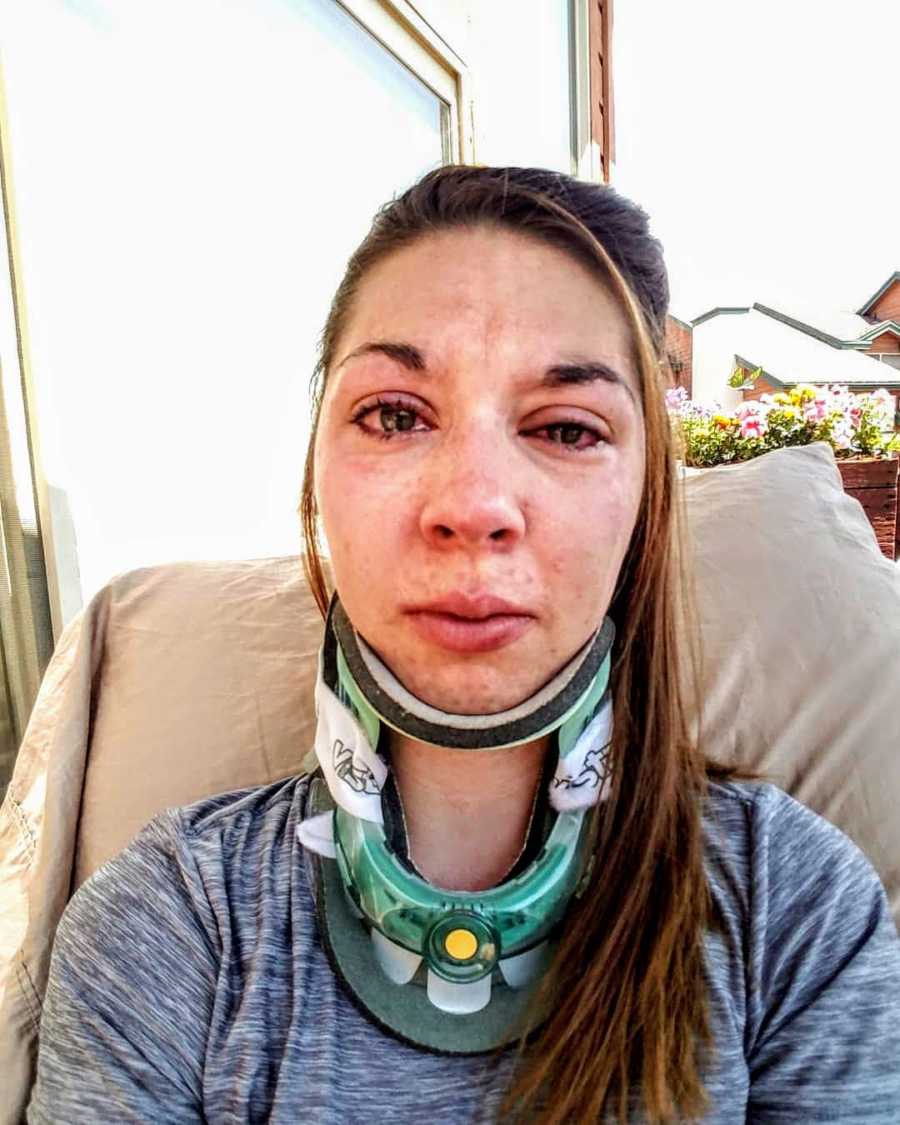
When the ball in New York City dropped to represent the start of a new year, I had a heavy heart. 2018 was another year with severe medical issues and surgery. I wanted 2019 to be a healing year but my body wasn’t cooperating. The pain 2019 showed me was its own cruel entity. It was mentally difficult recovering from a successful surgery, but also coping with a new injury below my new fusion. The pain was disabling. It prevented me from walking far, sitting, standing, and sleeping well. Every day was a mental choice to not lose hope, fight for joy, and to keep living in a body I felt trapped in. My mental fortitude was tested to its limit.
I cried every night as my spine or SI joints would shift out of place. I didn’t know how much longer I could live with a specific intractable pain that consumed me for 251 days. For nine months, I had a variety of extensive testing that led to a multitude of fears and anxiety. All the testing was ultimately leading to surgery, but everything kept coming back ‘normal.’ It was maddening. There was something very wrong. The only time neurological tests came back abnormal was when they were done manually to check various reflexes in my legs. My physical therapists tried so hard to help but my body couldn’t tolerate anything; in hindsight, I now know why.
Prior to my surgery, I made an appointment with my surgeons. I needed to hear I had done everything in my power to avoid surgery. On August 22, 2019, I saw my surgeons. I’ll never forget the hugs received. When the first surgeon came in the room, I tried to explain how my spine was changing position. It was easier to show so I stood up. My walking gait was complex. My surgeon held onto me as I hobbled over to the wall. I remember saying, ‘You don’t need to hold onto me. I’ve been like this for months.’ He couldn’t believe I hadn’t fallen yet. When I stood against the wall to show him how my spine is no longer in the position it once was, he said, ‘I see what you’re saying now. This isn’t the position we had you in. Your walking is very bad, too. Let me help you sit down. You’re not safe like this. I’m worried you will fall.’
The next surgeon walked into the room. He wanted to see me walk in the hall. I remember how he watched me walk. He said, ‘Your walking is not good at all.’ I said, ‘This IS my good walking. Do you want to see my bad walking?’ I walked a few feet in the hallway. When I turned around our eyes inadvertently locked. A lot can be said through silent communication. He looked at me compassionately and said, ‘You can’t walk around like this. You can’t even walk your dog.’ Once in the room I was told, ‘We’ve been trying to postpone and not do this surgery, but we have no choice now.’ It was game over.
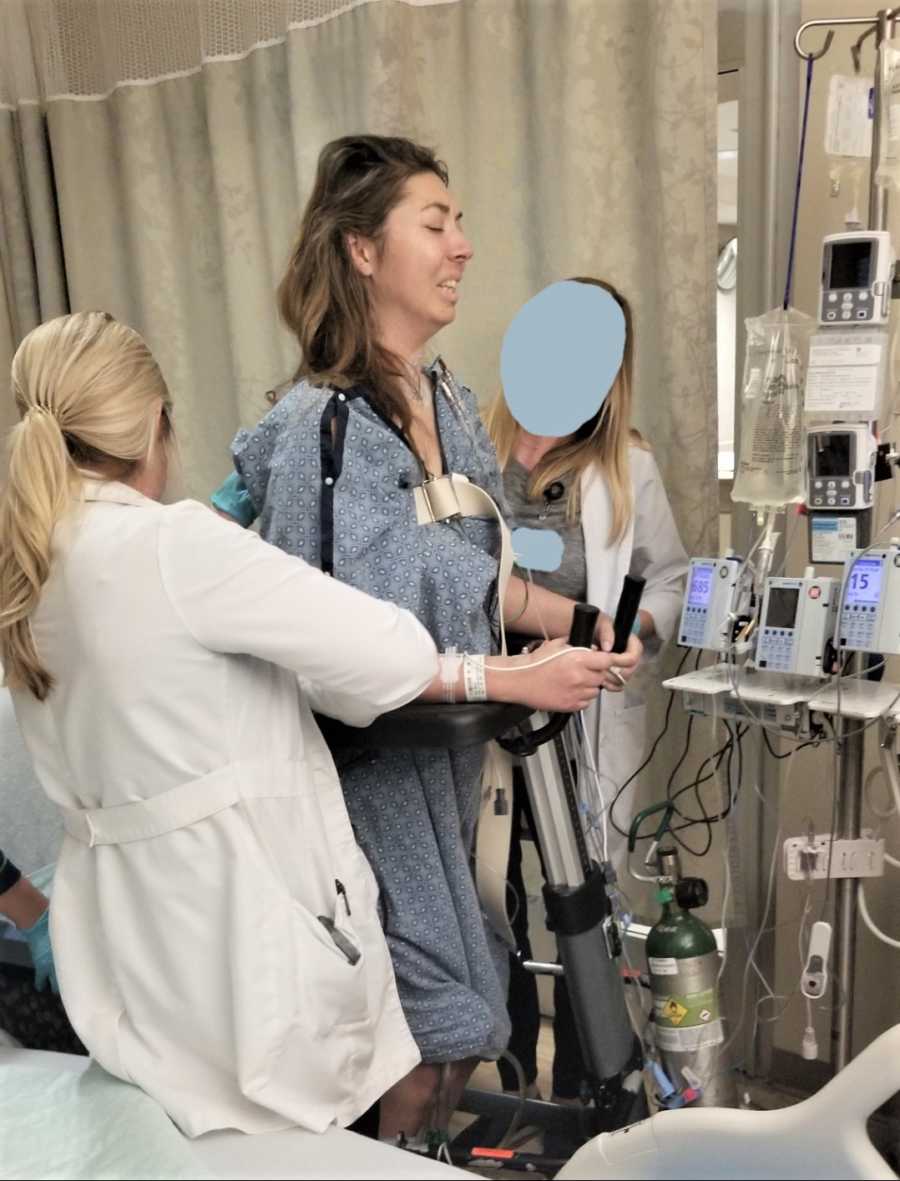
After evaluation, we had a serious conversation about what would be done during surgery and the impact it would have not only on my body, but on my life as well. I still remember the somber atmosphere. It’s not uncommon in patients with EDS to have the area above or below a fusion give out, but the rate at which it happened to me was unfathomable. I remember being asked questions like, ‘Do you want to live alone? You will require assistance. Do you want to have children? It will be difficult to carry a child fused in this manner. Do you understand how life-altering this surgery will be? There’s a lot you’ll have to learn. Do you understand we don’t know the long-term effect this will have on your body? It could make other things worse. Do you understand you may need additional surgery?’ My surgeons did their job, but I hated every question they asked. None of the questions changed the fact I needed surgery. My surgeons made sure I knew having this surgery was a lifelong commitment.
After my consultation, I needed fresh air. Now. Right now. My heart was racing. My stomach was in knots. I felt like I was going to throw up. There were too many emotions to process. I was petrified, sad, frustrated, and overwhelmed. I was scared to stay as I was and scared to move forward with surgery. The surgery was permanent. When I removed my emotions from the equation, there wasn’t a single doubt in my mind surgery was the right decision. My body was worsening. The pain was relentless. I had weakness down my legs. My pelvis would shift. My bladder and bowel didn’t work right. I was fighting a losing battle.
As the day of the surgery approached, my anxiety was increasing. All the ‘what if ’scenarios played through my mind; you know, the ones that will drive you mad. I couldn’t help but think, ‘What if this makes me worse?’ The night before surgery I went out to dinner with my parents. I forced myself to eat because I knew I wasn’t allowed to eat after midnight. On Sept. 16th I woke up in a panic. I was a sobbing mess. I told my parents, ‘I’m ‘chickening out. I don’t want the surgery. I can’t do it.’ They both told me, ‘You don’t have to. There’s no pressure. This is your choice.’ The fear I had with this surgery was unlike the other 35. The totality of what I was about to undergo and wake up to was incomprehensible.
I tried convincing myself I was fine even though it wasn’t true. I was on medication that barely touched the pain. I was running out of time. I remember going upstairs to lay with my dog. I ended up crying myself to sleep. An hour later, I woke up and my phone rang. It was the surgical nurse asking me if I could be at the hospital within the hour. I unconvincingly said, ‘Okay,’ and hung up. I quickly hobbled to get back inside. My dad was holding the door open for me. I took 1 step up and froze. I couldn’t speak. I stared at my dad. Something shifted in my back like it never had. There was severe pain down both legs, and I couldn’t walk. The ‘impossible decision’ was made. My body made the decision for me. I had some ‘colorful language’ and said, ‘Let’s go. I have to be at the hospital within an hour. I need the surgery.’
The ride to the hospital was stressful. I put on Worship music. I couldn’t believe what was about to happen. I had to believe all would work out. When I was brought to pre-op, I was teary-eyed. The assistant told me, ‘Sweetheart, don’t cry. You’re in good hands. You’ll be okay.’ She then wiped my body with antiseptic wipes to decrease the risk of infection. My surgeons came to discuss the plan one last time: open my spine from shoulder level to tailbone, fix anything in my upper back to help bring my head into alignment, fuse both the remainder of my spine and SI joints and finally, do a tethered cord release. It was a solid plan. All that was left to do was sign, Megan King, on the black line. With a shaky hand, I signed my name which ultimately gave permission to take away the rest of my motion. The time had come to be wheeled to the OR. My parents hugged me and told me they loved me. With tears in my eyes, I said, ‘I love you, too.’
Eight hours later, I woke up in recovery and I felt like my torso was on fire. I was screaming. I begged the nurses to intubate and put me in an induced coma. I remember the nurse saying, ‘Go get her mom.’ My mom came. We locked eyes. I told her, ‘I can’t do this! Ow! The pain! Ow! Put me in a coma! I can’t do this!’ Like she always does, my mom said, ‘You are doing it. I know it hurts but you are doing it.’ My dad rubbed my feet. The meds weren’t working. People with EDS often metabolize them faster. Eventually, the meds were changed, and I was heavily sedated.
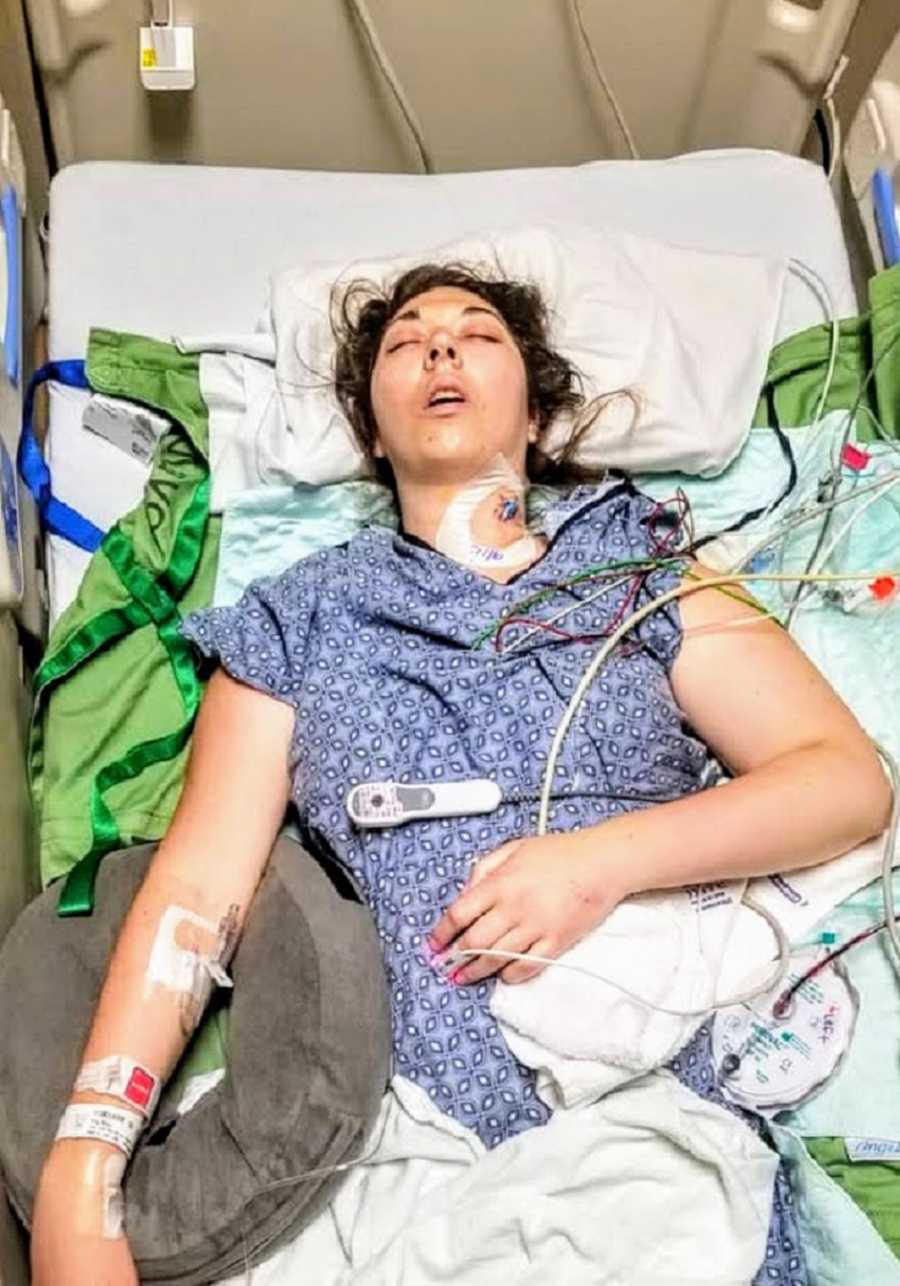
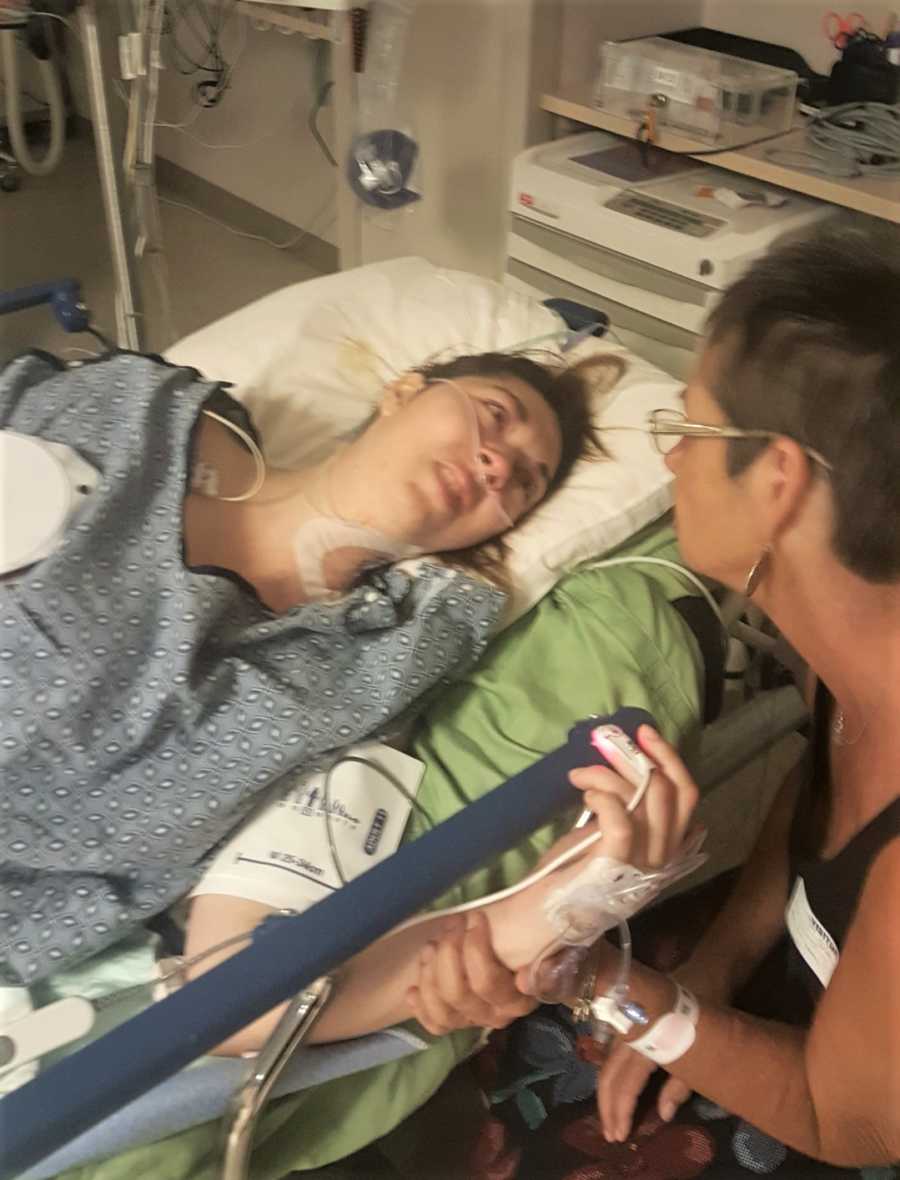
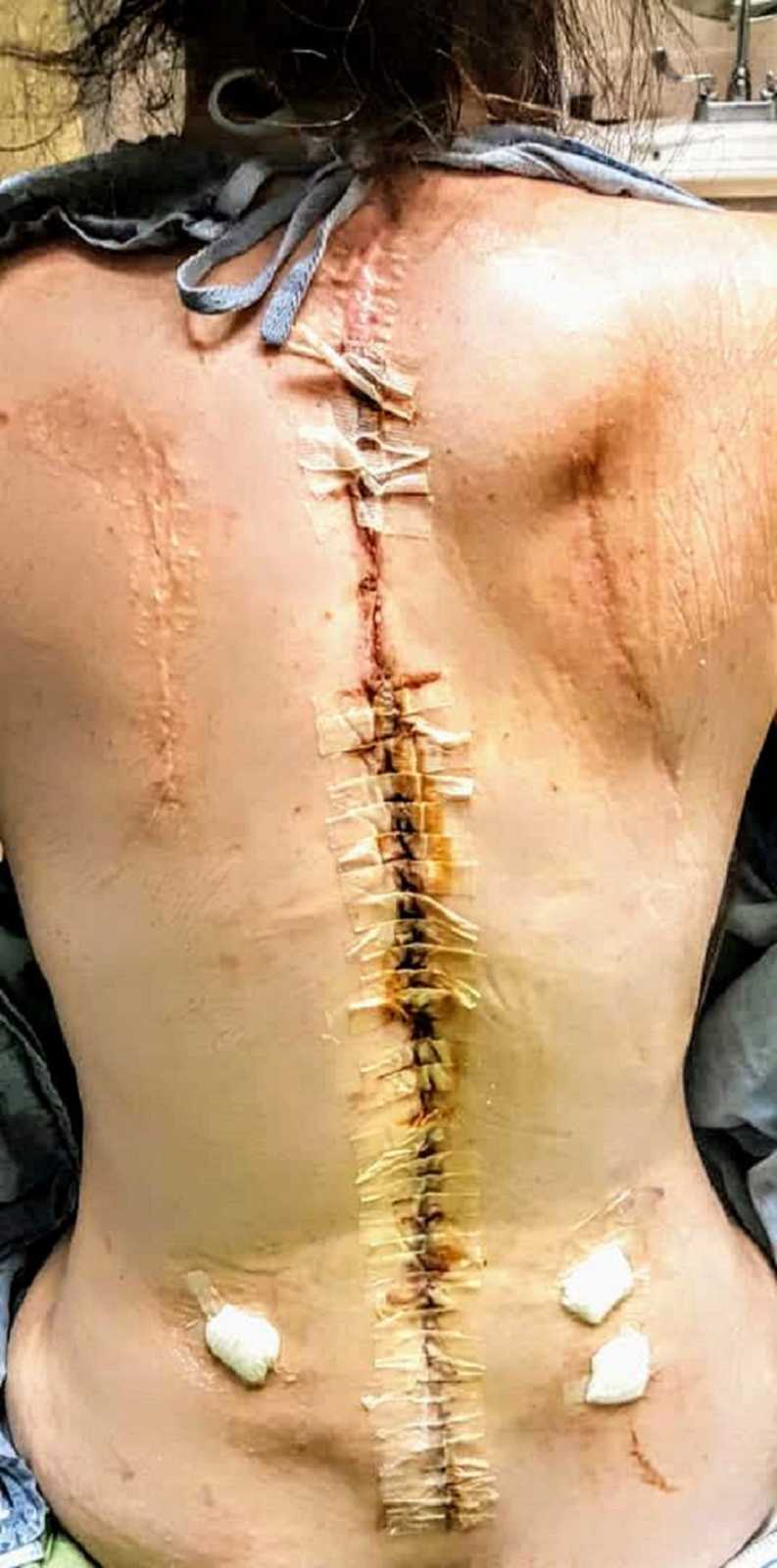
The recovery process is very unpredictable. It has been one of the hardest recoveries due to other complications (ex. bowel blockage, fluid retention, CSF leak, blood clots, etc. and having no resources to guide me on how to move forward in this body.) My spine has been fully reconstructed. After 3 years of inquiring about the tethered cord, it was finally released! In Layman’s terms, the bottom of the spinal hangs freely. My spine is held with 57 screws, a new skull plate, 4 rods, 2 connectors, donor bone graft, an interbody spacer, BMP, and probably other things I don’t know about. The first time I saw my x-ray I said, ‘That’s a lot of metal. I’m a bionic woman.’
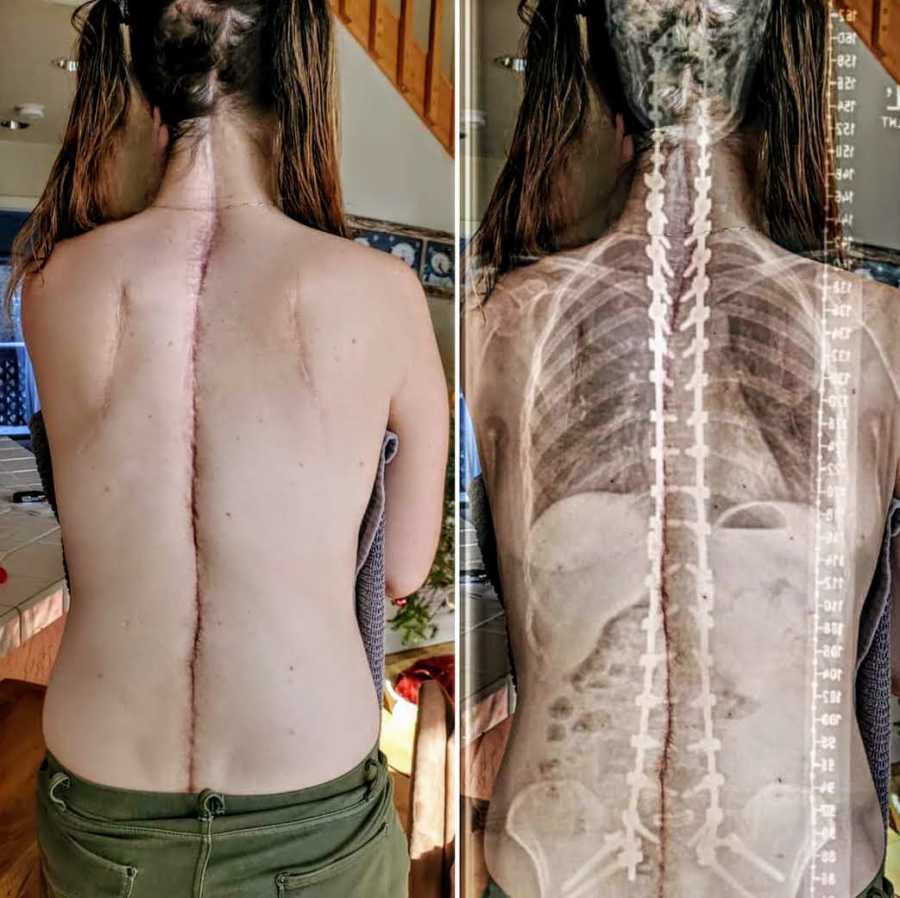
The road to recovery isn’t an easy one. Having no torso movement impacts other systems like nervous, circulatory, digestive, etc. All motions feel foreign. I tell my therapists, ‘I don’t know how to do any of this.’ I’m fortunate my team reminds me of how far I’ve come and how recovery isn’t straightforward. Despite how difficult things are I’m glad I underwent the surgery. I’m better. I can walk. I’m moving in the right direction BUT I must dig deep. When I get knocked down, I dust myself off and get back up again. I continue to dig in deep, push forward through the tears, and try my best. My body is healing in proper alignment. My bladder and bowel are working better, but sleep continues to be an ongoing battle. Each day brings on its own challenges, frustrations, and celebrations. Without a great relationship with my surgeons and the support of family and friends, I wouldn’t be where I am today.
My hope in sharing is someone else, especially with EDS, won’t find themselves in the same predicament as me. I miss motion. I miss being able to bend back to look up at the stars, the moon, and the sky. I miss being able to turn my head side to side to see what’s coming. But despite how hard life may get, just know it’s possible to overcome the many challenges you may encounter.”
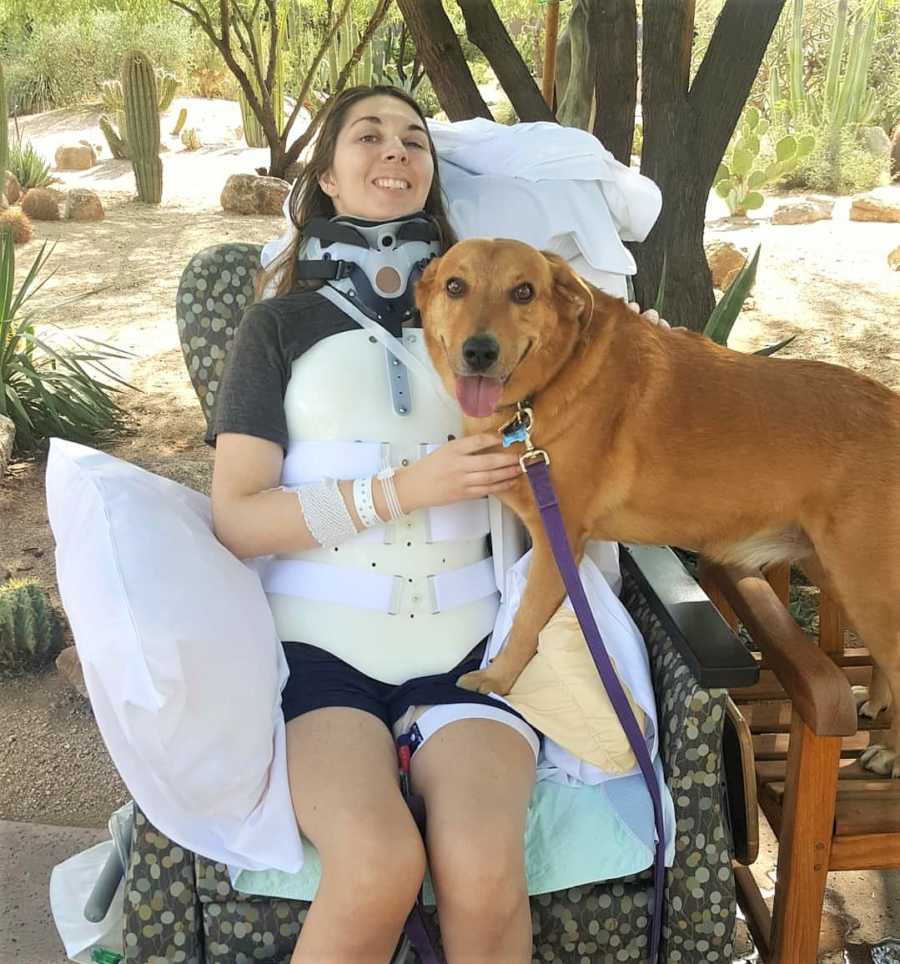
And once the storm is over, you won’t remember how you made it through, how you managed to survive. You won’t even be sure whether the storm is over. But one thing is for certain, when you come out of the storm, you won’t be the same person who walked in. That’s what the storm is all about. – Haruki Murakami
This story was submitted to Love What Matters by Megan King of Illinois. You can follow her journey on Instagram. Submit your own story here, and subscribe to our best stories in our free newsletter here.
Read the first part of Megan’s journey here:
Provide strength and encouragement for others. SHARE this story on Facebook with friends and family.

